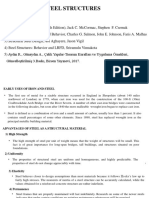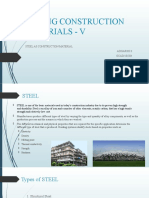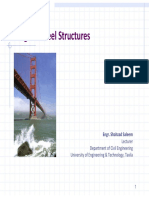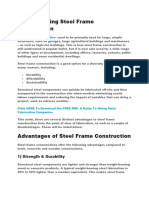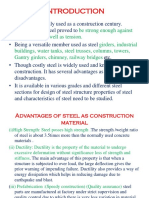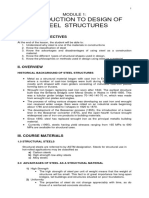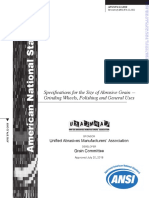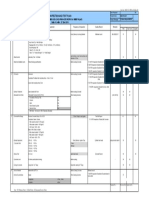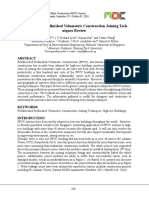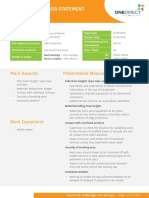0% found this document useful (0 votes)
43 views6 pagesSteel Structure
Steel is widely used for building infrastructure due to its low cost, strength, and versatility. It can be used to construct everything from small tools to large buildings and ships. Steel structures are durable, cost effective, and recyclable. Common steel building designs include beam and girder frames, trusses, arches, and cable-stayed or suspension bridges, each suited to different span ranges.
Uploaded by
Andronic GeorgeCopyright
© © All Rights Reserved
We take content rights seriously. If you suspect this is your content, claim it here.
Available Formats
Download as DOCX, PDF, TXT or read online on Scribd
0% found this document useful (0 votes)
43 views6 pagesSteel Structure
Steel is widely used for building infrastructure due to its low cost, strength, and versatility. It can be used to construct everything from small tools to large buildings and ships. Steel structures are durable, cost effective, and recyclable. Common steel building designs include beam and girder frames, trusses, arches, and cable-stayed or suspension bridges, each suited to different span ranges.
Uploaded by
Andronic GeorgeCopyright
© © All Rights Reserved
We take content rights seriously. If you suspect this is your content, claim it here.
Available Formats
Download as DOCX, PDF, TXT or read online on Scribd
/ 6




